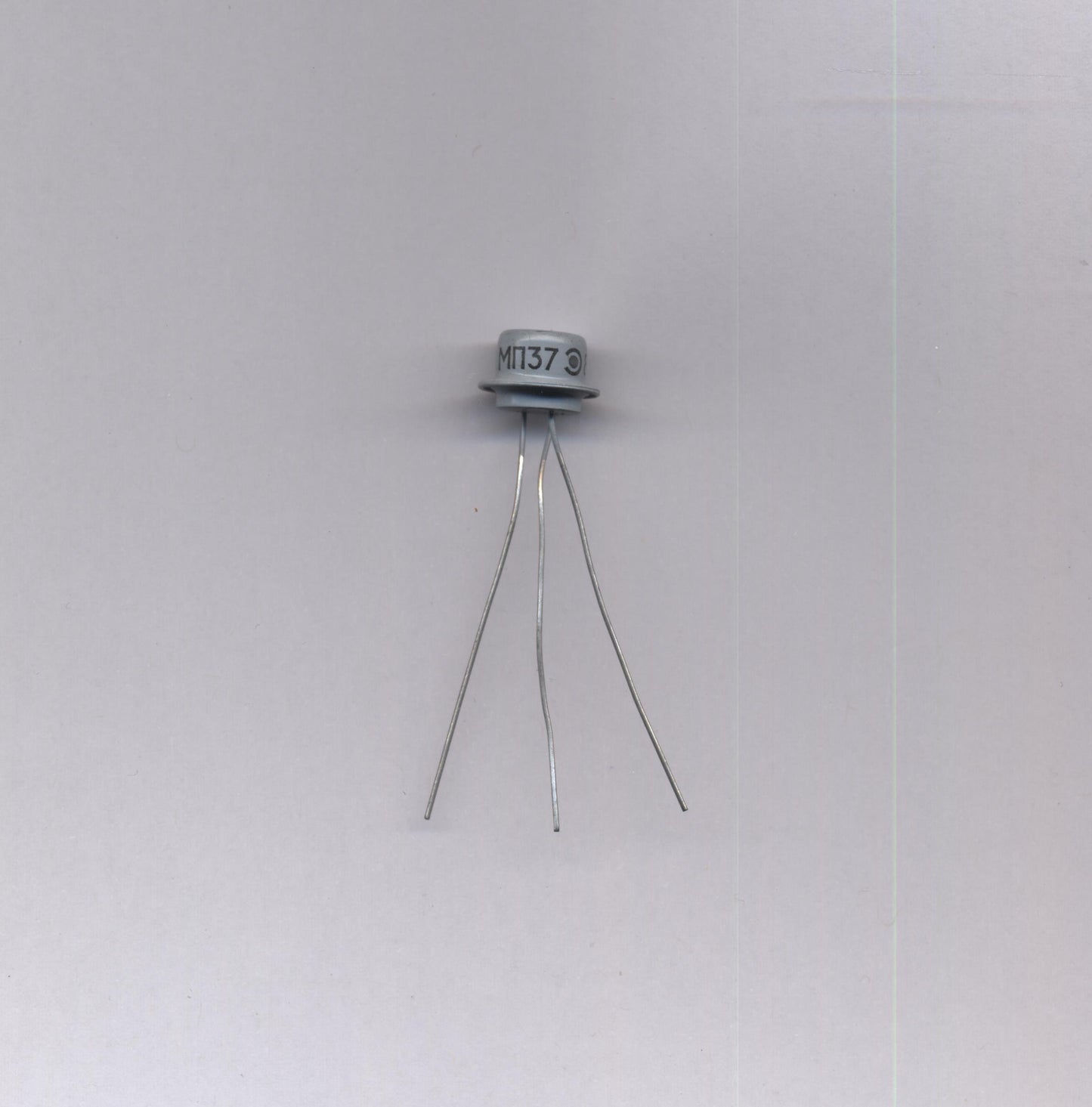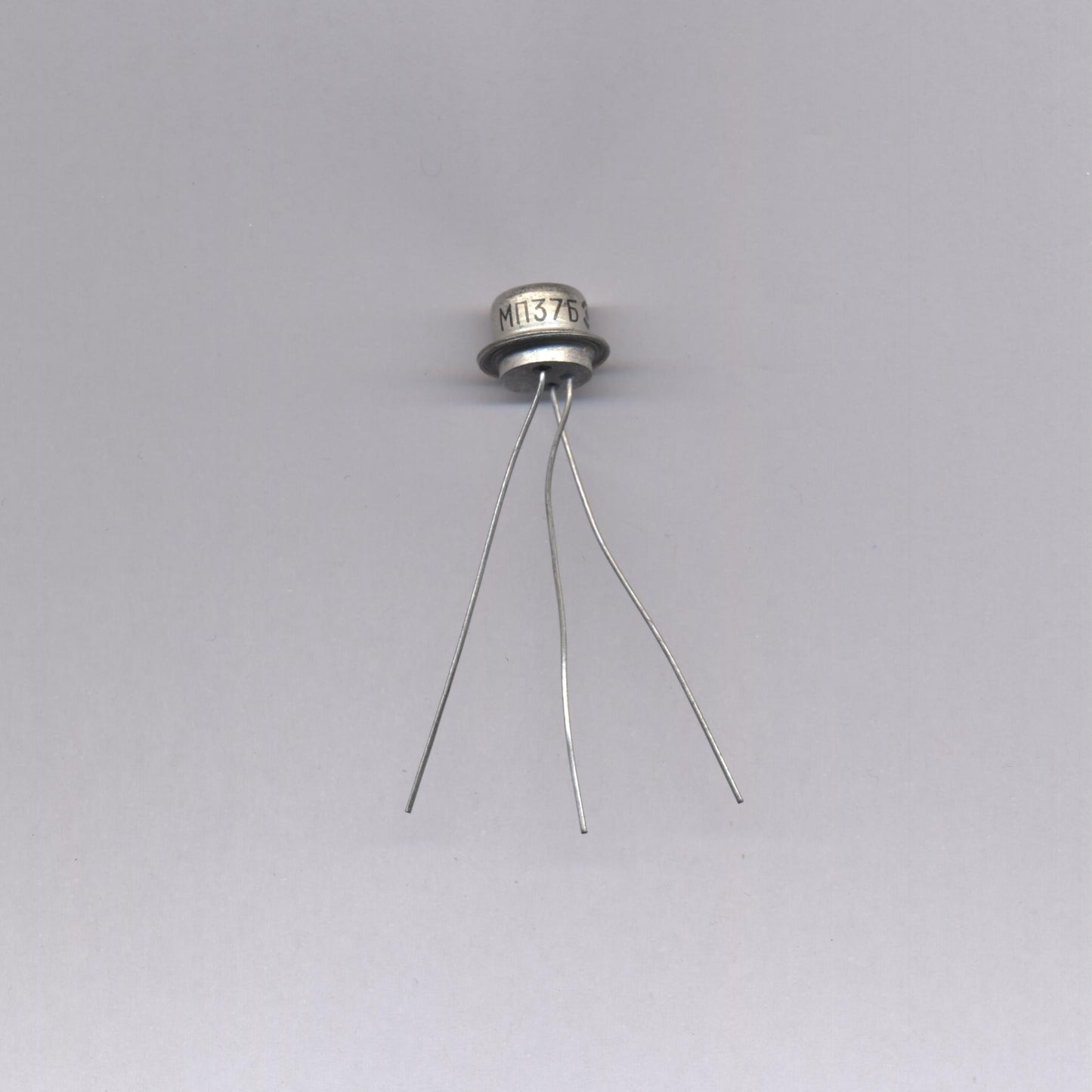MP37 MP37A MP37B Germanium NPN Transistors
MP37 MP37A MP37B Germanium NPN Transistors
Couldn't load pickup availability
- Length 8 mm
- Diameter 12 mm
- Weight 1.75 g
MP37 hFE: 15-30
MP37A hFE: 15-30
MP37B hFE: 25-50
IMPORTANT! All my transistors are unsorted, unselected, untested, just picked up from factory boxes.
Germanium transistors, also known as Ge transistors, were once commonly used in audio applications before silicon transistors became more prevalent. They have unique characteristics and are known for their warm and vintage sound that many audiophiles and musicians find appealing. Here are some key points about using Germanium transistors in audio applications:
Warm and Vintage Sound: Germanium transistors are renowned for their warm, smooth, and vintage sound characteristics. This warmth is due to their non-linear behavior, which can introduce harmonic distortion and coloration to audio signals. Many musicians and audio enthusiasts seek out Germanium transistors for their retro sonic qualities.
Limited Gain and Noise: Germanium transistors typically have lower gain and higher noise compared to modern silicon transistors. This limitation makes them less suitable for high-gain, low-noise applications. However, in certain audio applications where a bit of coloration and character are desired, these characteristics can be an advantage.
Sensitivity to Temperature: Germanium transistors are sensitive to temperature variations, which can affect their performance. They exhibit a negative temperature coefficient, meaning that their gain decreases as they heat up. Proper thermal management is essential when using Germanium transistors in audio circuits to maintain consistent performance.
Vintage Equipment: Germanium transistors were commonly used in vintage audio equipment from the 1950s to the 1970s. Devices such as guitar pedals, microphone preamplifiers, and amplifiers from that era often featured Germanium transistors. Vintage gear enthusiasts may seek out these components for restoring or replicating classic sound.
Limited Availability: Finding new, high-quality Germanium transistors can be a challenge, as production of these components has declined over the years. Many available Germanium transistors are often New Old Stock (NOS) or salvaged from vintage equipment. This scarcity can make them more expensive and less consistent in performance.
Circuit Design Considerations: When designing audio circuits with Germanium transistors, engineers and enthusiasts need to account for their non-linear behavior and sensitivity to temperature. This may require more careful biasing and component selection to achieve the desired audio characteristics.
Silicon Transistor Alternatives: While Germanium transistors have their unique appeal, silicon transistors are generally more stable, less noisy, and easier to work with in modern audio applications. Silicon transistors have largely replaced Germanium transistors in most audio equipment, offering greater precision and reliability.
In conclusion, Germanium transistors have a distinct sound that appeals to those seeking a vintage, warm, and character-rich audio experience. They were widely used in the past but have been largely replaced by silicon transistors in modern audio equipment due to their limitations and scarcity. However, for those interested in vintage gear or looking to create unique audio effects, Germanium transistors can be a valuable component in audio circuit design.






